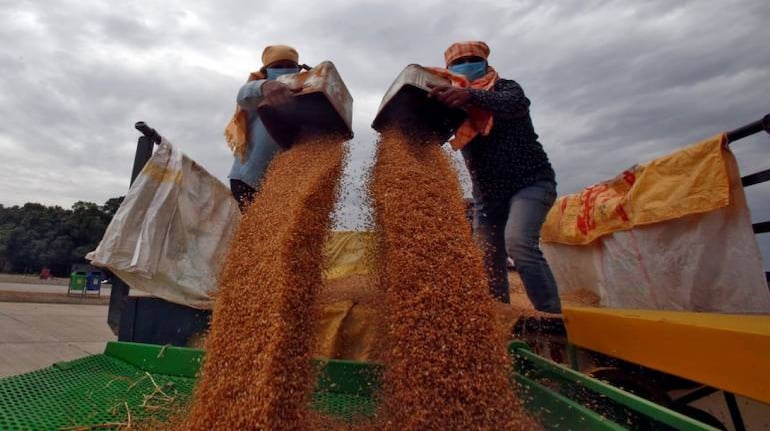



Many people believe that export curbs help to improve the domestic availability of essential commodities such as wheat, rice or sugar, cool down their prices, and thus rein in food inflation. However, restrictions on outbound shipments of wheat and rice through a complete ban on wheat and prohibitive export duties on non-basmati rice seem to have little impact on their prices, if the latest retail inflation numbers are any indication. Thus, the year-on-year cereal inflation was 13.8 percent in December, driven by a 22.2 percent and 10.49 percent increase in the prices of wheat and rice, respectively.
Cereal Inflation
The headline food inflation number does not provide a true picture of the ground reality. Most of the fall in food inflation was driven by a sharp correction in vegetable prices. Cereal inflation, which remains the major focus of the government's food price management strategy, has been rising since October 2021.

Obviously, India’s export curbs are not working. The cost-push inflation can’t really be controlled by banning exports, a demand control measure. Similarly, monetary policy will have a limited impact here though monetary tightening should continue to curb inflationary expectations. Containing food inflation calls for a more nuanced and sensible policy making.
The price of a commodity rises due to any one or a combination of the following reasons: (i) an increase in demand, (ii) supply shortfalls, and (iii) increased cost of production even if the demand remains stable or even weak. In the case of a staple food item such as wheat or rice which tend to have inelastic demand, fear of likely shortage caused by significant geopolitical developments such as the Russia-Ukraine war can play havoc by inducing sellers, household consumers and bulk users including FMCG companies to over-stock thereby artificially jacking up the market demand and in turn prices. To make matters worse, stringent export curbs signal a serious supply shortage, which induces hoarding and speculation, and makes export curbs ineffective in controlling prices. Little wonder then, the prices of rice and wheat continue to rise.
Higher Input Cost
In the short run, food items have relatively stable demand, and supply factors tend to have a stronger influence on the prices. In the case of wheat, there was only a modest shortfall in production due to heat waves and the government had a comfortable stockpile. Despite that, wheat prices have been steadily rising. It’s clear that supply shortage was not a major contributory factor to the surge in prices. It’s actually the increase in production costs due to a surge in the prices of key inputs such as chemical fertilisers, fuel (due to high crude oil prices made worse by exorbitantly high fuel taxes imposed to check “tax revenue and expenditure gap” that raises transportation cost) and wages that are aiding cost-push food inflation in the country. A weakening Indian rupee has added to the problem by increasing the rupee cost of imported chemical fertilisers and crude oil.
On a longer-term basis, populist hikes in minimum support prices (MSPs) or floor prices of rice, wheat and sugarcane have been aiding food inflation for long, yet those market-distorting policies continue. Raising floor prices is a preferred policy tool to raise farmers’ income in a country wherein farm productivity remains shamefully low. For instance, on average, India produces 4 tonnes of paddy per hectare versus 6 tonnes by Vietnam.
Given this backdrop, ensuring price stability will remain a challenge, more so when the input costs have risen. Export curbs will have limited effect, at best, but they have serious side effects that shouldn’t be ignored.
Unreliable Supplier
Frequent export curbs create complications for foreign buyers and at the same time, turn India into an unreliable supplier, prompting measures in importing countries to boost local supplies, often with the help of the erection of import barriers. That will cap future export demand for Indian agricultural and food products, and run counter to the objective of export promotion.
Moreover, denying producers and investors in the agriculture value chain the opportunity to make profitable sales, domestically or in overseas markets, will discourage them from making long-term investments. That will hamper future supply responses and make management of food inflation even more difficult.
To conclude, export curbs work neither in the short run nor in the long run even if one ignores their adverse implications for foreign buyers who depend on India to supply essential food items such as wheat or rice.
Instead of knee-jerk reactions such as export curbs, better demand-supply forecasting, regular weather updates for better crop planning and deepening of futures markets will help manage food price inflation more effectively and without any adverse side effects. In the short run, the government should release wheat and rice in the open market from its reserves to check cereal prices and contain food inflation.
Prerna Sharma Singh is a director on the board of Indonomics Consulting Private Limited, a policy research and advisory startup and heads its agriculture, food and retail practice. Ritesh Kumar Singh is a business economist and the company’s CEO.
Views are personal and do not represent the stand of this publication.
Discover the latest Business News, Sensex, and Nifty updates. Obtain Personal Finance insights, tax queries, and expert opinions on Moneycontrol or download the Moneycontrol App to stay updated!
Find the best of Al News in one place, specially curated for you every weekend.
Stay on top of the latest tech trends and biggest startup news.